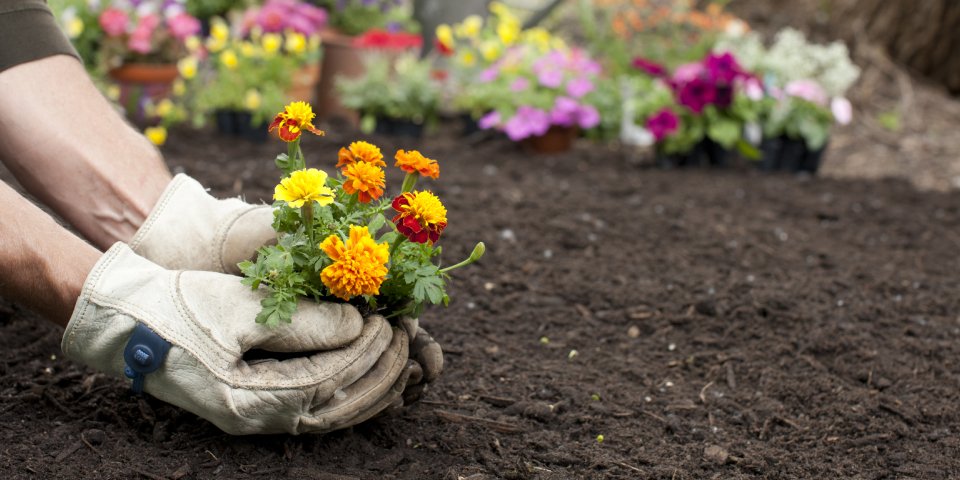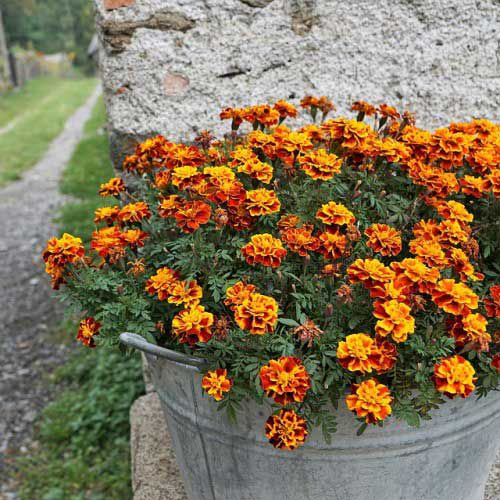Marigold Profile
Written by admin
Oct 28 2021

Marigold is an annual herbaceous plant belonging to the genus Marigold of the Compositae family. Leaves are pinnately divided; there are a few glands along the leaf margin. The head-shaped flower is solitary; the involucre is cup-shaped and the tip is toothed; the tongue-shaped flower is yellow or dark orange; the tubular flower has a yellow corolla. The achene is linear, with a narrow base, black or brown, with short micro hairs; the crest has 1-2 long awns and 2-3 short and blunt scales. The flowering period of marigolds is from July to September.
Marigold morphological characteristicsMarigold growth habit and growing environment and distributionMarigold efficacy and roleOrnamental valueEdible valueEnvironmental valueMarigold cultivationSowingCuttings
Marigold is native to Mexico. It is distributed all over China. It can grow in areas from 1150 meters to 1480 meters above sea level, mostly in roadside meadows. Marigolds are often sown in spring. Because of their large flowers and long flowering period, they are often used in flowerbeds.
Marigold morphological characteristics
Marigold is an annual herb, 50-150 cm high. Stems erect, stout, with long and thin strips,
Marigold growth habit and growing environment and distribution
The suitable temperature for marigold growth is 15-25℃, and the suitable temperature for the flowering period is 18-20℃. The relative air temperature of the growth environment is required to be 60-70%, and the temperature in winter is not lower than 5℃. In summer, the high temperature is above 30℃, the plants are long, the stems and leaves are loose, and the flowers are few. Below 10°C, growth slows down. Marigolds are light-loving plants. Adequate sunlight is very beneficial to the growth of marigolds. The plants are short and sturdy and the flowers are gorgeous. If there is insufficient sunlight, the stems and leaves will become soft and slender, with few and small blooms. Marigolds do not have strict requirements on the soil, preferably fertile, well-drained sandy loam.
Marigold efficacy and role
Ornamental value
Marigold is a common landscaping flower with large flowers and a long flowering period.Marigolds are used to decorate flower beds, squares, arrange flower bushes, flower borders, and cultivate flower hedges. Medium and dwarf varieties are suitable for flower beds, flower diameters, flower bushes, and potted plants; varieties with higher plants can be used as background materials or cut flowers.
Edible value

Environmental value
Marigold plants have strong resistance and absorption to gases such as hydrogen fluoride and sulfur dioxide, and can also attract nematodes in the soil.Marigold cultivation
Sowing

Summer sowing: In order to control the height of the plant, you can also sow in summer, and it can bloom 60 days after the seedling is sowed in summer.
Cuttings

Read Next:
Top 10 Most Beautiful Roses in the World
Top 10 Most Beautiful Flowers in the World
26 Best Autumn Flowers to Plant for Fall Color in Garden
Latest Updated
- Benefits of Bugleweed - 7 Science-backed Health Benefits
- Bugleweed Dangers & Side Effects - Is It Poisonous?
- How to Plant Evergreen Trees - What You Should Know
- When to Plant Evergreens - Grow Guide for Evergreen Trees
- 12 Wonderful Evergreen Shrubs for Your Garden
- 12 Popular Evergreen Plants with Pictures for Beginners
- When And How To Prune A Lilac Bush Like a Pro
- How to Grow & Care for Lilac Vine (Hardenbergia Violacea)
- Japanese Lilac Tree (Syringa Reticulata) Care & Propagation Guide
- Shumard Oak Pros and Cons - What to Know
Popular Articles
- Winter maintenance of Antirrhinum Majus
- How to Grow Terminalia Mantaly Tree
- How to Grow and Care for Crossostephium Chinense
- How to grow Antirrhinum Majus in spring
- Peristeria Elata (Dove Orchid) Profile: Info & Care Guide
- Underwatered Snake Plant (Sansevieria Trifasciata) - Signs And How To Fix
- How to Care for Brazilian Jasmine Plant (Mandevilla Sanderi)
- How to Grow & Care for Graptopetalum Purple Delight in Summer
- Rosa Chinensis (China Rose): Plant Growing & Care Tips
- How to Care for Baby Sun Rose (Aptenia Cordifolia)